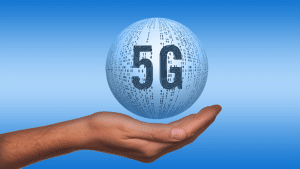Telecom gear makers Nokia, Huawei and Ericsson expect India to play a leading role in driving global 5G-related developments even as the industry and the government here ensure that the country gets the newer fifth-generation technology along with some developed countries.

According to ET Telecom, Nokia India head Sanjay Malik said while addressing the 5G Congress event “I am confident that we would be leading the global arena on 5G…It would be the much shorter timeframe in which 5G would come to India than whatever we had with 2G, 3G, and 4G,”.
Huawei’s global director of wireless marketing, Emmanuel Coelho Alves seconded the thought, saying “India is making the right progress in ensuring the direction for the Industry for 5G.”
Alves further said India is “extremely well positioned” for 5G having cemented its position in the 4G space in the last one year with rapid data uptake fueled by abundant connectivity and availability of cloud-backed content services. “The daily data traffic will grow significantly, and 5G will play a major role in further augmenting this increase,” he said.
For telecom operators, here, the bigger opportunity in the 5G scenario will be to cut down the total cost of ownership (TCO). It is expected that the total cost of ownership for telcos will decrease 10 times as compared to the 4G technology. However, the industry would need to look at fiber aggressively to support the new technology, as it lays a foundation of a strong back haul which is a must for 5G.
“Next year, we expect lab tests to start for 5G that will help the industry to bring the technology commercially to India,” Huawei’s Alves said.
Swedish telecom gear maker Ericsson’s global head of 5G and RAN Architecture, Joakim Sorelius said that the company is encouraged to see the focus on bringing infrastructure and spectrum regulation on 5G in India. “For India, it is an opportunity to benefit from technology that 5G brings. India has a scale for 5G.”
For the Indian market, Sorelius said that India should consider the mid-band, which is 3Ghz to 6GHz spectrum band, besides looking at lower bands for 5G coverage. “We, however, advocate that all available bands should be made available for cellular connectivity in India.”
Nokia’s Malik said, “Consultation is in the process to identify spectrum for 5G in India, and to make sure that it is in sync with global standards so that we don’t lag behind.”
Huawei’s Alves said that in addition to the logical evolution for devices for 5G, the industry would need to look at delivering services to industries or verticals that didn’t get the focus of the telecom industry.
“Healthcare, transport, power and manufacturing are some key industries. We already work with these industries and have an early engagement to try to explore their recommendations for 5G,” Alves said.
Nokia’s Malik also said that the industry needs to ensure that relevant 5G use cases are identified in India. “Smart parking, smart factory, and smart agriculture is already in operation on 4G. Remote medical care and other critical use cases must be identified on 5G.”
Nokia has a 5G lab in Bangalore which is focusing on developing the use cases for 5G, while Ericsson is working with the IIT-Delhi to develop 5G use cases for the country.


























